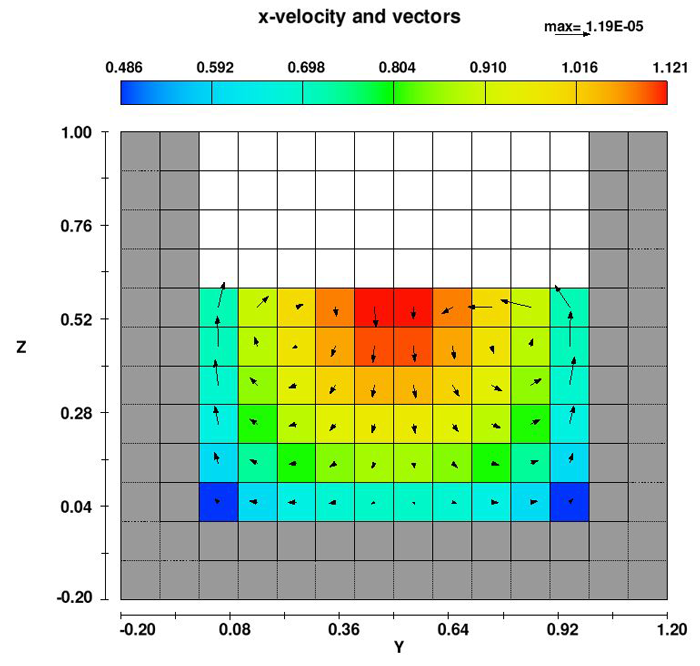
Hydraulic Boundary Conditions
One of the principal challenges of numerically modeling a river reach is how to best define the hydraulic boundary conditions to achieve a realistic model. Practicing hydraulic engineers typically employ rating curves that relate fluid elevation and volume flow rate at selected cross-sections of a river. To provide such data to FLOW-3D users, new rating-curve boundary conditions have recently been developed, making it easier to model many types of flows, for example:
- Flood wave simulations for designing hydraulic structures (3D model)
- Flood wave simulations of a river basin or an entire catchment area (2D shallow water)
- A “pure discharge” condition, which allows the setting of a boundary condition when no gauge data is available and only the volume flow rate (time-dependent or not) is known
These new boundary conditions are also useful for other applications in which having velocity profiles at inlet boundaries is desirable, by eliminating the need for extra modeling space for flow development.
The Rating-Curve Boundary Condition
A rating curve is a cross-sectional river characteristic which relates the fluid elevation to the discharge flow in the river. The Rating-Curve boundary condition allows the user to specify rating curves for both inlet and outlet boundary types. The rating curve condition can be defined in addition to a time-dependent “volume flow rate” boundary condition. This makes it more convenient for modeling a flood wave scenario by eliminating the need for manual input of time-dependent fluid elevation data. With a rating curve BC on an outlet it is also no longer necessary to specify a time-dependent pressure on the outlet. The rating curve always gives the fluid elevation corresponding to the simulated volume flow rate integrated over the boundary. This allows users to have a wave deformation-related outlet boundary condition for the free surface elevation.
FLOW-3D has the capability to read external files having more than 500 data points specified as input information. This allows the input of very accurate rating curves for any arbitrary river profile.
This video shows an example of a flood wave simulation. The inlet boundary condition has a rating curve that is producing a supercritical flow associated with an incident flood wave. The outlet has a rating curve boundary condition for subcritical flow. This combination of boundary conditions, with the time-dependent flood wave at the inlet causes the formation of a hydraulic jump in the modeled domain. The four charts show the variation in fluid elevations at the boundaries corresponding to the changing volume flow rate.
The Volume Flow Rate Boundary Condition
If only the flow rate of a river is known on an inlet boundary, and no information about the fluid elevation is available, then the boundary type Volume Flow Rate can be selected for the inlet. This sets a fluid elevation in accordance to the flow situation in the domain adjacent to the inlet boundary area. The only input the user needs to provide, in addition to the volume discharge rate, is a minimum fluid elevation. The minimum fluid elevation can be used as a way of preventing the change of the flow regime from subcritical to supercritical.
This video shows the same setup as the previous video, except that the inlet boundary has been changed to a subcritical, volume flow rate. Since the inlet is no longer forcing a supercritical flow, the modeled domain maintains a subcritical flow condition throughout.
The Inlet Profile Boundary Condition
All the newly-implemented boundary conditions have a velocity profile that is uniform over the boundary condition face. To reduce the “profile development length” is the goal of a third type of hydraulic boundary condition, the Inlet Profile. For a natural inlet, FLOW-3D automatically sets water depth at the boundary to be equal to that in the adjacent mesh cells inside the domain. This avoids any significant jump in water elevation near the inlet boundary, and allows the water surface at the inlet to rise as the water surface rises inside the domain and vice versa.

